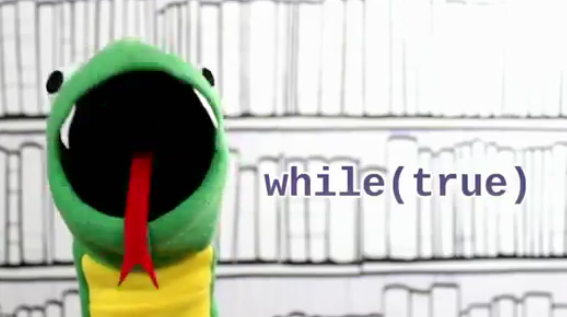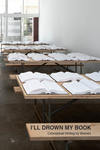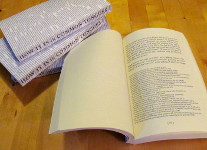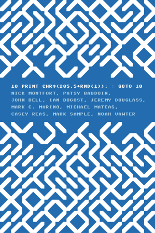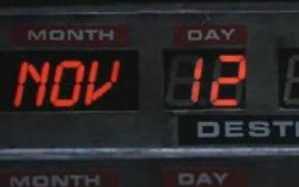Kathi Inman Berens storified some nice media elements relating to the 2013 electronic literature exhibit and reading at the MLA Convention.
Code, Poetry Intersect in a Corner
In this episode of Poetry Corner with Guido, Guido the python shares a Gertrude Stein poem titled Sacred Emily.
Jared Nielsen, thanks to his schooling in Modern and Contemporary American Poetry, his ability as a programmer, and his recent creation of a puppet, has developed an amazing conflation of Gertrude Stein, the Python programming language, and the Wonder Showzen episode “Patience.”
Nielsen has been recreating famous American poems in Python or so that they are about Python, as in “The Red Wheelbarrow” and “Song of Myself.”
His project parallels that of Páll Thayer along two dimensions: Thayer, in his series Microcodes, presents short programs in Perl (not Python) that often recreate famous artworks (not poems), for instance Vito Acconci’s Seedbed and Jasper Johns’s Flag.
We must admit, however, that Thayer does not employ a puppet named after Larry Wall.
Radical Books of 2012 (7/7)
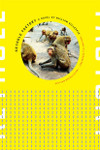
Keyhole Factory
William Gillespie
Soft Skull Press · 368 pages
William, congratulations to you – and Soft Skull Press – on the new, big publication of Keyhole Factory, which some might think is your first novel. Actually, your intensity of writing would humiliate Roberto Bolaño. You have at least eight books (some pseudonymous, some collaborative) available via your press Spineless Books, which publishes other people’s work as well. You share a quality with George Perec in that you are a graphophile, and you share another quality with him in that you are an incredible writer, imaginative on all levels, as you demonstrate in Keyhole Factory. It’s great that Jeff Clark designed the cover. I think I see why he used the picture of the monkeys. They’re voyeuristic subjects; we’re watching them as if through a keyhole. That one in the middle looks back, making us nervous. If they were people they’d be eating lunch or making love or watching TV or something, and we’d fixate on that. But they’re monkeys, so we just notice that one of them is watching us. You think?
Radical Books of 2012 (4/7)
I’ll Drown My Book: Conceptual Writing by Women
Edited by Caroline Bergvall, Laynie Browne, Teresa Carmody, and Vanessa Place
Les Figues · 455 pages
Community Reviews (showing 1-30 of 96) filter | sort: default (?) | rating details
Nov 19, 2012 Mark Noack rated it ***** review of another edition
a fantastic book. as an overview/introduction to current post-modern writing, the most interesting anthology i have read to date. while some of these writers might not have made the “cut” for the Goldsmith/Dworkin anthology, possibly due in part to their work being too “baroque” (in Vanessa Place’s terms); this is my preference. while i find conceptual/experimental writing interesting, much of what has been done suffers the danger of becoming automatic/generated/stenography. while the dadaist ar…more
like · see review
Oct 17, 2012 Sigrun Hodne marked it as to-read
A perfect gift from dear a friend! Looking forward to diving into it!
like · see review
Oct 26, 2012 Erin Lyndal added it
This wasn’t my cup of tea, so I didn’t finish. Bummer because I was really psyched about it.
like · see review
Dec 08, 2012 Janey Smith added it
My review of I’ll Drown My Book
Radical Books of 2012 (3/7)
Rise of the Videogame Zinesters: How Freaks, Normals, Amateurs, Artists, Dreamers, Drop-outs, Queers, Housewives, and People Like You Are Taking Back an Art Form
Anna Anthropy
Seven Stories Press · 208 pages
The discussion of mainstream gaming in this book, while it isn’t exactly generous, covers both what is produced and the labor issues of how it is produced. The book’s DIY instructions point readers to tools and sketch the simplest sorts of development processes. (Such pointers may be what a book does best, as there is plenty of relevant information online.) What makes this book valuable and radical (other than the conceptual writing exercise cataloging game topics on pp. 137-139) is the amazing world it presupposes in which Halo and Bioshock can go unmentioned while there are pages about Anthropy’s Gay Sniper. Unofficial games made by individuals are shown to be part of culture and the politial and social discourse. Beyond newsgame and artgame, although not detached from some of their tactics, are many short experiments, games about “putting down your dog” that speak to everyday experience. Games that say what you want them to say and not games that say what someone else wants you to say.
Radical Books of 2012 (2/7)
How It Is in Common Tongues
Cited from the Commons of digitally inscribed writing by John Cayley & Daniel C. Howe
NLLF [Natural Language Liberation Front] · 296 pages
Some seek diamonds in the rough on the Web; others mine from this lode of language mud and darkness. This profound document was fashioned with snippets of pages, with the search engine, and with the novel first publised as Comment c’est – using all of them quite perversely. Samuel Beckett’s 1964 How It Is describes a person moving and not moving through the mud, alone, not alone, and then once more alone. Cayley and Howe, bending the service known as Google to their literary purposes, have located every phrase of the novel on Web pages where no reference to Beckett is made. For instance, the first words, “how it was I quote,” are found in a New York Times excerpt from Elie Wiesel’s And The Sea is Never Full. The phrase is provided, the URL is given in a footnote … and the same is done for every other phrase in How It Is. The result is an edition of Beckett’s book made of text that was literally found on the Web. The only thing funnier will be the Beckett Estate’s response.
The Gorge in Review, and in Remix
Leonardo Flores has now written 22 posts (one each day, as is his wont over at “I ♥ E-Poetry”) on Taroko Gorge and its various remixes.
Quite a critical outpouring, considering that Taroko Gorge was originally a one-day project!
Leonardo also presents TransmoGrify, another remix of Taroko Gorge that narrates the programming and remixing of these 22 poem generators, producing stanzas such as this one:
Mark inverts the line.
Sonny Rae experiments.
Judy intervenes upon the variable.
With the absolute ♥ of the e-poetry of life butchered out of their own bodies good to eat a thousand years.
A Poetry Class for 36,000
December 10, 5:30pm in MIT’s 6-120
Al Filreis
Teaching Modern & Contemporary American Poetry to 36k
Al Filreis has taught his “ModPo” course at Penn for years; in Fall 2012 he
offered a 10-week version of the course online, via Coursera, to more than
36,000 students. The course, as in its previous versions, does not include
lectures, being based instead on discussion – the collaborative close
readings of poems. The course grows out of Filreis’s work at the Kelly
Writers House; he has been Faculty Director of this literary freespace since
its founding in 1995. Filreis is also co-founder of PennSound, the Web’s
main free archive of poetry readings, publisher of Jacket2 magazine, and
producer and host of “PoemTalk,” a podcast/radio series of close readings of
poems. In conversation with Nick Montfort, Filreis will discuss ModPo and
his perspective on writing, teaching, and digital media.
Filreis is Kelly Professor of English and Director of the Center for
Programs in Contemporary Writing at the University of Pennsylvania. He is
the author of Wallace Stevens and the Actual World, Modernism from Right to
Left, Counter-Revolution of the Word: The Conservative Attack on Modernism,
1945-60, and other works. He was chosen as Pennsylvania Professor of the
Year by the Carnegie Foundation in 2000.
Co-sponsored by the SHASS Dean’s Office and the Literature Section.
All Purple Blurb events are free and open to the public. The Purple Blurb
series is supported by the Angus N. MacDonald fund and Writing and
Humanistic Studies.
What’s the Story on Digital Media?
I generally will reply to any email messages that was personally written to me and which requests a reply. Perhaps because I wrote for my college newspaper, I’m inclined to try to help student journalists when I can. Sometimes, though, the best suggestions I can offer are ideas about how to rethink the basic approach and find a real story, rather than the sought-after quotations. As when, recently, I wrote basically this in reply to some extremely general questions about digital media and changes in the way we communicate – perhaps prompted by a class assignment rather than part of work toward an article for publication:
Grouping together Facebook, blogs, and text messages on one side and letter-writing on the other isn’t really sound, since it assumes that Facebook, a blog, and a text message are the same sort of thing and that a letter is a different sort of thing. Is a letter typed on a word processor the same as or different from a hand-written letter? Is one a digital media letter and the other pre-digital? Why is publishing a long, public blog post at all like sending a text message to a friend?
Your questions also suggest that people are constantly making choices between using digital media and traditional media. We live in a media ecology in which old media are not simply replaced by new. There are many ways to communicate, but we very seldom choose one over the other. I suppose there are circumstances under which you might send a friend a postcard, for instance, but I find it very unlikely that you’d make a direct and conscious decision to do that instead of sending that friend a text message.
Your questions also seem to assume that new media technologies just appear and that we are influenced by them, because you ask only about the effects of these technologies. Facebook was not given to the Earth by aliens, though. It was developed by people based on existing ideas about communication. The same can be said for the Web and any other digital communication system. Someone who is interested in knowing why communication online is the way that it is will never figure that out just by asking about how Facebook influences the way people write. It’s also necessary to understand why Facebook came to be the way it is, in terms of its original motivation and development and down to specific questions (such as your last one) related to particular features.*
I would suggest focusing on a particular digital media system and asking about how it arose, how it is used, and what’s special about it — not just in relation to some non-digital means of communicating, but overall. It can be worthwhile to ask what niche such a system has in the media ecology: What does it offer in particular that is better than other media channels? Then, you can see how people use language within that channel in interesting ways that is revealing in terms of culture, cognition, and so on. The people who study these systems successful in the humanities and social science, and those who build them and do well at it, take this sort of approach, and there are certainly interesting stories that result about why certain systems are successful in certain ways and how they are actually used.
The paragraph marked with *, of course, is just as true for computational platforms (the focus of the platform studies approach and the MIT Press Platform Studies series) as it is of communications systems, and it’s one of the core ideas behind platform studies and what it comprehends.
This student didn’t seem interested in approaching the topic differently and more productively, and asked instead if I could recommend someone who would provide quotes. That’s not a surprise – it’s the typical nature of this exchange, after all, and not a desire to roast any (unnamed) person, that motivates me to post this. It does go to show that whether you use in-person interviewing, an analog land-line phone, or email, you can miss gaining insight in the same way.
Submit to E-Poetry!
The deadline for E-Poetry 2013 (to take place in London, at Kingston University) is almost here – sumissions are due December 1. The festival will take place June 17-20.
Lede, Based on a True Story
Sometimes I encounter language that sounds like it was computer-generated, or that sounds like it would be even better if it was. Hence, the slapdash “Lede,” which is based on the first sentence (no, not the whole first paragraph) of a news story that was brought to my attention on ifMUD.
This very simple system does incorporate one minor innovation, the function “fresh(),” which picks from all but the first element of an array and swaps the selection out so that it ends up at the beginning of the array. This means that it doesn’t ever pick the same selection twice in a row.
Happy Thanksgiving, my fellow Americans.
Palindromes, the Next Best Thing to Rounded Corners
Mark Saltveit, palindromist and comedian, delivers a compelling “CHAD” talk on the e-levels of palindromes and his new approaches of Palindromics and its natural cultish extension, Scinegenics. In his talk, he covers some palindrome history and the development of weaponized palindromes. Although Mark is a letterist, he mentions a classic word-unit palindrome from the book of Exodus, “AHYH ASHR AHYH,” or “ehyeh asher ehyeh,” or, to rend it into a Popeye-esque English, “yam whaddaye yam!”
HuffPo’s Interview with NiMo
Illya Szilak interviews Nick Montfort in the article “The Death of the Novel: How E-Lit Revolutionizes Fiction,” the first of a series of posts on electronic literature.
Tracy Fullerton this Thursday at MIT on “Walden, a game”
Tried of thinking about well-defined regions of red and blue?
… start thinking about PURPLE BLURB, the digital writing series at MIT.
We’ll have our next event with TRACY FULLERTON, an experimental game designer, professor and director of the Game Innovation Lab at the USC School of Cinematic Arts where she holds the Electronic Arts Endowed Chair in Interactive Entertainment. The Game Innovation Lab is a design research center that has produced several influential independent games, including Cloud, flOw, Darfur is Dying, The Misadventures of P.B. Winterbottom, and The Night Journey – a collaboration with media artist Bill Viola. Tracy is also the author of Game Design Workshop: A Playcentric Approach to Creating Innovative Games, a design textbook in use at game programs worldwide.
Fullerton’s talk “Finer Fruits: Experiment in Life and Play at Walden” will take place:
November 8
5:30pm
In MIT’s 32-155 (Stata Center)
This is a joint event with the CMS Colloquium, and supported by the Angus N. MacDonald fund.
Walden, a game, is an experiment in play being made about an experiment in living. The game simulates Henry David Thoreau’s experiment in living a simplified existence as articulated in his book Walden. It puts Thoreau’s ideas about the essentials of life into a playable form, in which players can take on the role of Thoreau, attending to the “meaner” tasks of life at the Pond – providing themselves with food, fuel, shelter and clothing – while trying not to lose sight of their relationship to nature, where the Thoreau found the true rewards of his experiment, his “finer fruits” of life. The game is a work in progress, and this talk will look closely at the design of the underlying system and the cycles of thought that have gone into developing it. It will also detail the creation of the game world, which is based on close readings of Thoreau’s work, and the projected path forward for the team as we continue our sojourn in experimental in play.
We have also *added* a Purple Blurb event this semester. Prof. Al Filreis of the University of Pennsylvania Kelly Writers House will join us for a conversation with Nick Montfort on December 10 at 5:30pm in 6-120. He’ll discuss his experience teaching modern poetry to 34,000 students online. More about this as the time nears …
For now, I hope to see you this Thursday for Tracy Fullerton’s presentation about Walden, a game.
Two E-Lit Gatherings in Europe
I was at a workshop in Bergen on Tuesday and a conference in Edinburgh Thursday through Saturday. There were many interesting things to report or at least mention, and I’ve only managed to note two of them on the blog so far. I’ll also mention that in Bergen, I did the first transverse reading of the full ppg256 series, reading through the seven generators’ output four times. I was very pleased with the art gallery setting, the other readings and screenings, and the way my reading went.
Fortunately there is good documentation of both events in the ELMCIP Knowledge Base, a resource that lists critical work, events, and presentations about electronic literature as well as works of e-lit themselves. For these two events, abstracts and (in the case of the “Remediating the Social” ELMCIP conference in Edinburgh) full papers are included in the Knowledge Base as well.
For instance, my presentation in Bergen, represented by an abstract in the Knowledge Base, was “The ELO and Two E-Lit Exhibits.”
And, my keynote address at the beginning of the ELMCIP conference in Edinburgh was “Programming for Fun, Together,” for which a corresponding paper is available. I covered the main topics of the paper in about the first half of the talk and spent the second half trying to explain how to program in Commodore 64 BASIC, using concrete-poem-generating programs (including 10 PRINT CHR$(205.5+RND(1)); : GOTO 10) as my examples. I began by developing a program that prints “H” or “I” at random, using bpNichol’ favorite letter (“H”) and an adjacent letter that can be seen as either a rotation of “H” or a component of it. A one-line program was developed to printing either one uniformly at random. In part, this was my response to the less interesting but certainly more conventional “HELLO WORLD” program. I continued to show how a program that printed “x” or “y” could be quickly developed by modifying this one, after using Commodore BASIC itself, via the ASC function, to determine the appropriate new ASCII code. Then, I converted that program to “our” 10 PRINT (that is, the program I and nine co-authors have written a book about) and showed how the distribution and pair of characters could be changed.
In presenting these various 10 PRINT programs and developing new ones through modification, I wanted to show that BASIC programming can truly be undertaken in an exploratory way without a great deal of background. I also wanted to share with the group some of the amazing facility for poetic experimentation that is provided by a 30-year-old computer, inexpensive even at the time, that allows you to program immediately after being turned on.
Jill Walker Rettberg liveblogged my keynote (bringing back another wonderful historical tradition in digital media!) and there was also some discussion of the talk on Twitter.
My only regret related to the talk was that Rita Raley, who was scheduled to be the respondent for my talk, was unable to make it to the conference due to the storm damage and flooding in New York City. Scott Rettberg filled in and made a worthwhile connection from collaborative, social programming activity to collaborative writing, also questioning my four points about programming socially for fun.
The Edinburgh conference, which featured an exhibit at the Inspace gallery and performances throughout, resulted in a book that includes not only academic papers but also “artist’s pages” documenting the artistic works. I hope you’ll be interested in taking a look at the good supply of online “Remediating the Social” material.
10 PRINT Reading / Release Party
Our first event for 10 PRINT is scheduled for:
Monday
November 12, 2012
7pm
at the
Harvard Book Store
1256 Massachusetts Ave.
Cambridge, MA.
This means, of course, that the book will be printed and available for sale by then, which is less than a month from now.
The Harvard Book Store is an independent book store in Harvard Square, founded in 1932.
Of the ten authors of 10 PRINT, we’re planning to have at least me (Nick Montfort), Patsy Baudoin, and Noah Vawter there for some reading from the book, comments on the titular program and the writing of the book, and discussion. The reading is free and takes place at the bookstore itself, as the page on the event explains.
Purple Blurb at MIT this semester!
Yes we have Purple Blurb! The first event is in less than a week – sorry for the short notice; I hope you locals can join us. Here are the details:
Monday October 1, 5:30pm in 6-120
Rafael Pérez y Pérez, Fox Harrell, and Nick Montfort
In conversation about narrative generation and MEXICA, GRIOT, and Curveship
Three creators of poetic and imaginative systems speak about computational creativity, narrative generation, and the way systems for this sort of work are culturally generated. Rafael Pérez y Pérez is creator of the plot-focused MEXICA system for the generation of stories and is Profesor/Investigador Titular C in the Departamento de Tecnologías de la Información at the Universidad Autónoma Metropolitana, Unidad Cuajimalpa, México D. F. Fox Harrell is creator of GRIOT and the Alloy algorithm, which generates literary and multimedia texts based on conceptual structures. Harrell is associate professor of digital media at MIT in CMS/WHS, a principal investigator at CSAIL, and head of the Imagination, Computation, and Expression Laboratory. Nick Montfort developed Curveship, an interactive fiction and text generation systems that allows for parametrically controlled narrative variation. Montfort is associate professor of digital media at MIT in CMS/WHS and head of the Trope Tank.
Thursday November 8, 5:30pm in 32-155
Tracy Fullerton
“Finer Fruits: Experiment in Life and Play at Walden”
A joint event with the CMS Colloquium
Walden, a game, is an experiment in play being made about an experiment in living. The game simulates Henry David Thoreau’s experiment in living a simplified existence as articulated in his book Walden. It puts Thoreau’s ideas about the essentials of life into a playable form, in which players can take on the role of Thoreau, attending to the “meaner” tasks of life at the Pond – providing themselves with food, fuel, shelter and clothing – while trying not to lose sight of their relationship to nature, where the Thoreau found the true rewards of his experiment, his “finer fruits” of life. The game is a work in progress, and this talk will look closely at the design of the underlying system and the cycles of thought that have gone into developing it. It will also detail the creation of the game world, which is based on close readings of Thoreau’s work, and the projected path forward for the team as we continue our sojourn in experimental in play.
Tracy Fullerton, M.F.A., is an experimental game designer, professor and director of the Game Innovation Lab at the USC School of Cinematic Arts where she holds the Electronic Arts Endowed Chair in Interactive Entertainment. The Game Innovation Lab is a design research center that has produced several influential independent games, including Cloud, flOw, Darfur is Dying, The Misadventures of P.B. Winterbottom, and The Night Journey – a collaboration with media artist Bill Viola. Tracy is also the author of Game Design Workshop: A Playcentric Approach to Creating Innovative Games, a design textbook in use at game programs worldwide.
As always, all events are free and open to the public. The Purple Blurb series is supported by the Angus N. MacDonald fund and Comparative Media Studies / Writing and Humanistic Studies.


